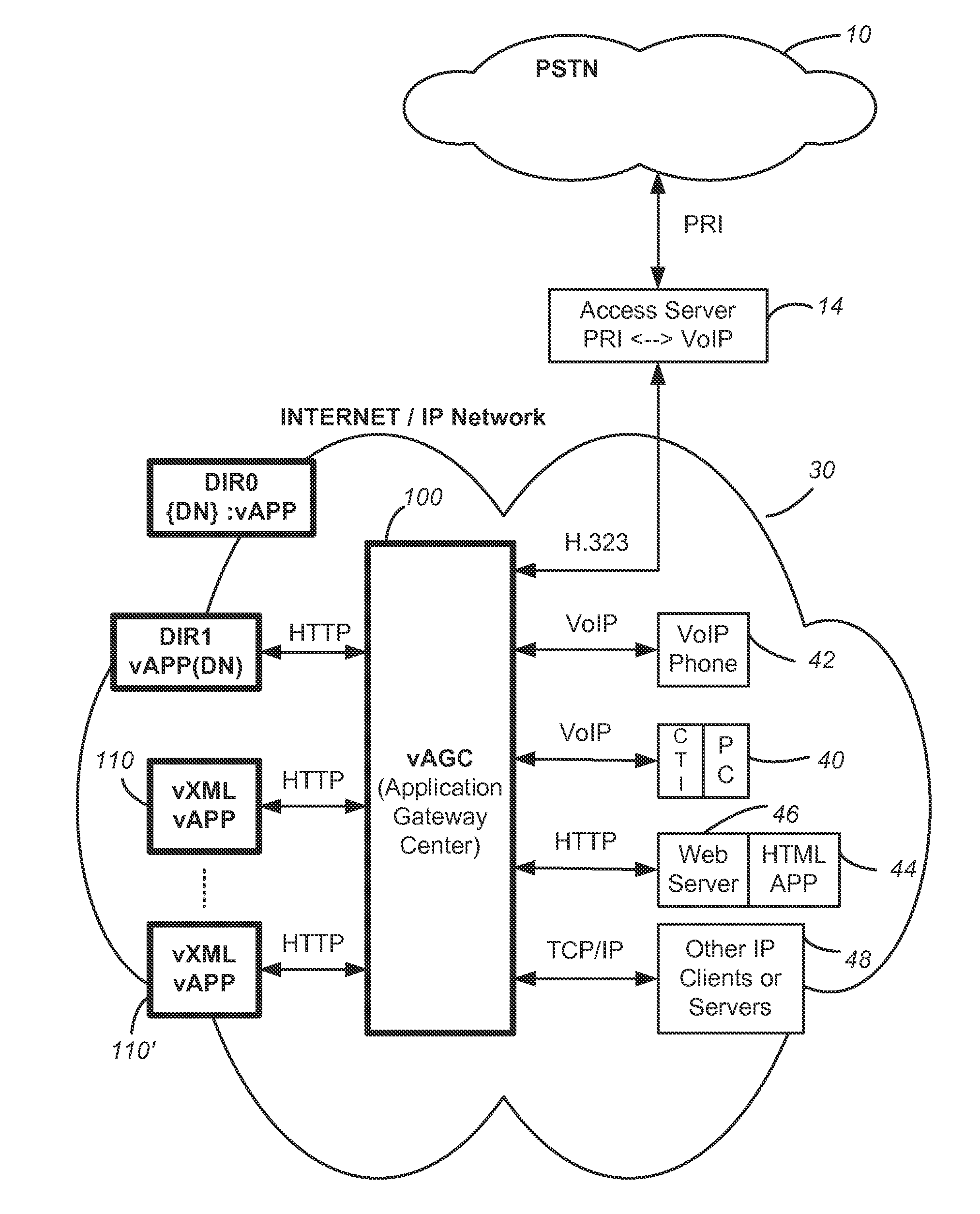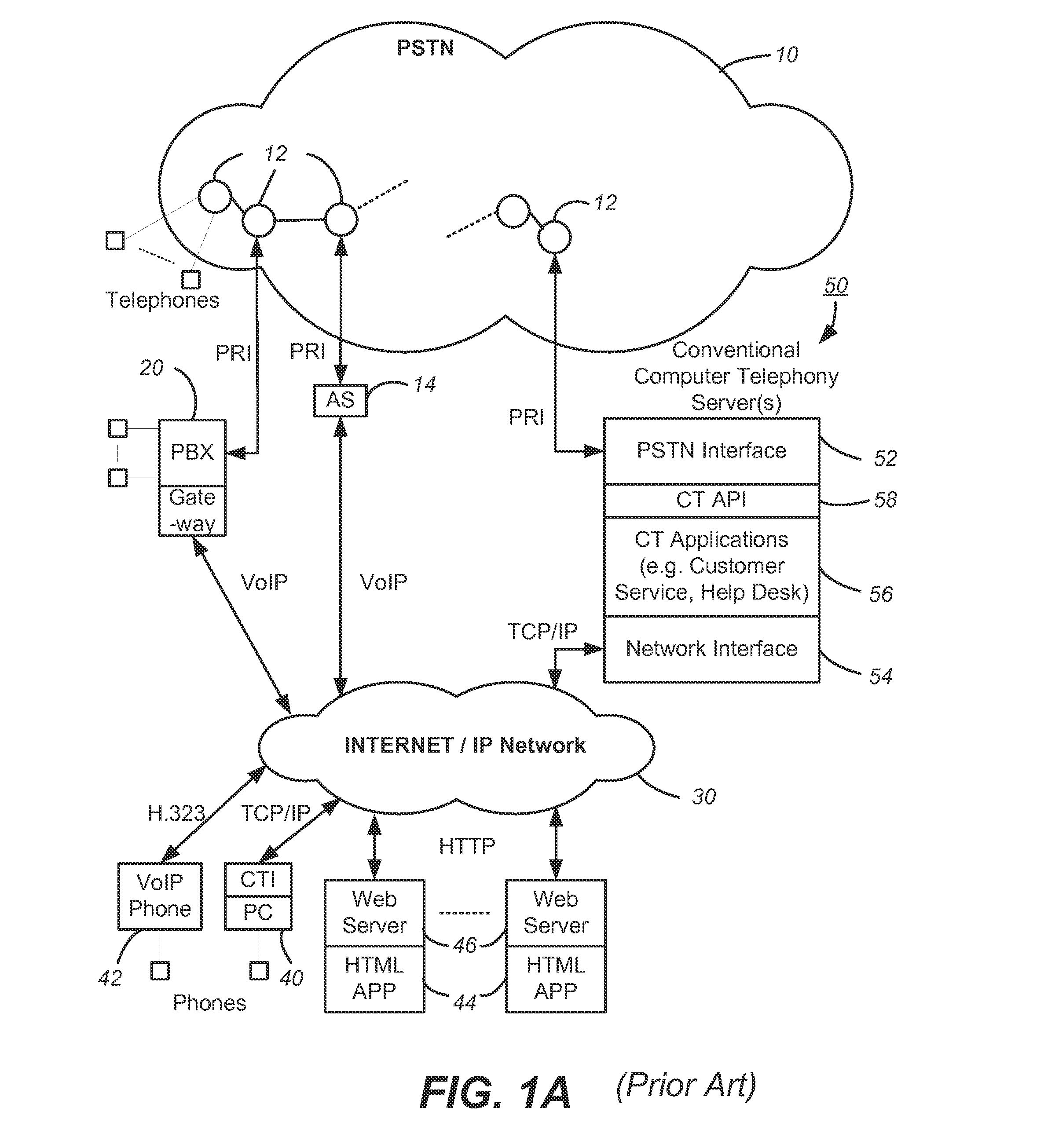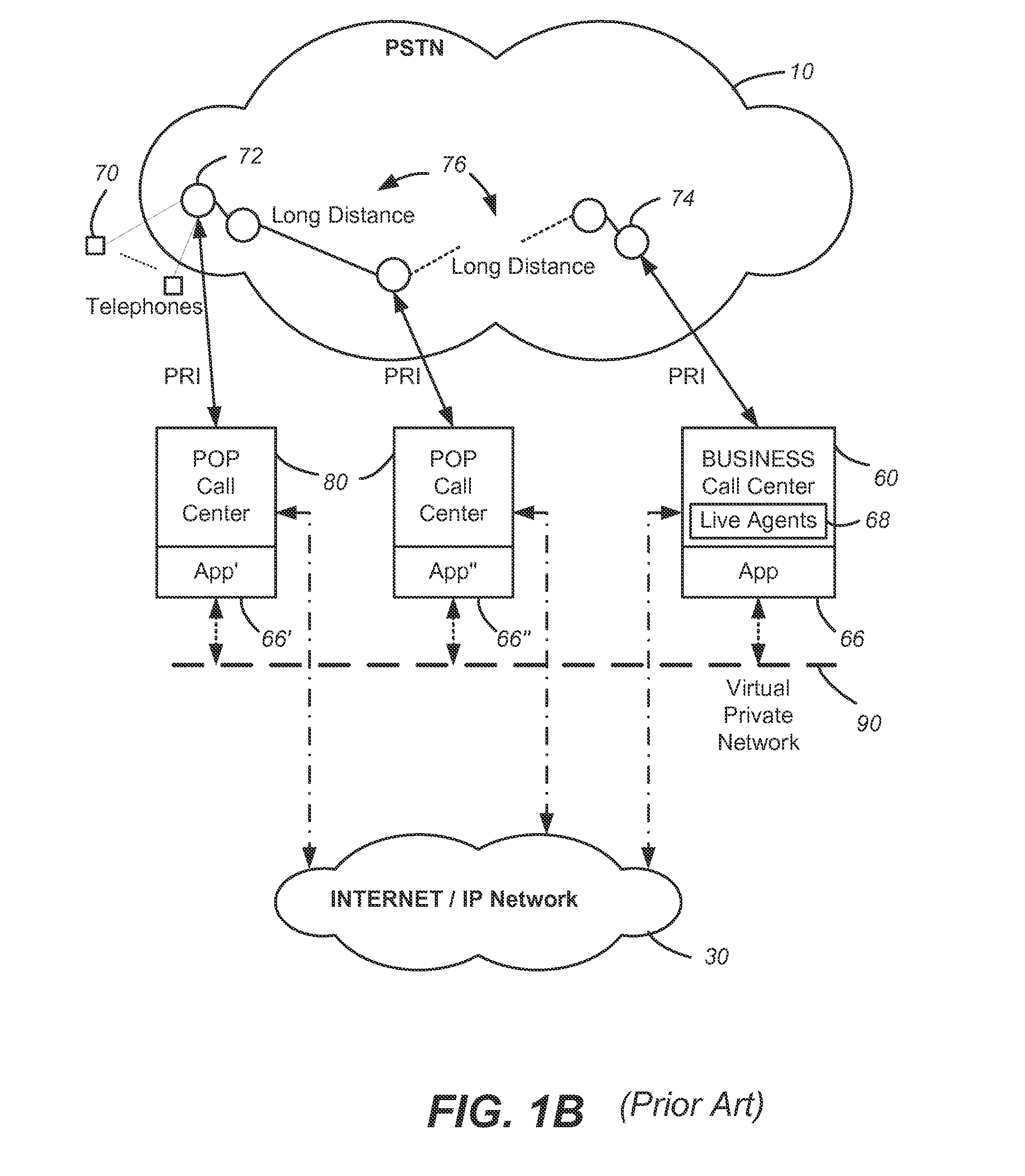System and Method for Dynamic Telephony Resource Allocation Between Premise and Hosted Facilities
a dynamic and resource allocation technology, applied in the field of telecommunication and a networked computer telephony system, can solve the problems of inability to quickly develop and deploy telephony applications, the infrastructure of telephony systems is not easy to facilitate the development and deployment of telephony applications, and the problem of capacity and equipment failure cannot be handled in an expedient manner with existing infrastructures
- Summary
- Abstract
- Description
- Claims
- Application Information
AI Technical Summary
Benefits of technology
Problems solved by technology
Method used
Image
Examples
examples
[0096]The following are examples of microXML communication between the session manager 210 and the vXML parser 242.
MicroXML sent from the session manager to the vXML parserRequest the parsing of a new file 24601 Request the continued parsing of the same file 24601Report a basic user event to the vXML parser 24601 termdigit #Report a user event with parameter(s) to the vXML parser 24601 termdigit # assign=varname=value
MicroXML sent from the vXML parser to the session managerAction from parserplayaudioformat=audio / default,value=http: / / www.voxeo.com / greeting.vox
[0097]The following is an example of a vXML file:
Example vXML file format=“audio / msgsm” value=“$audiodir; / $foo;.vox” termdigits=“*” cleardigits=“true” / >
[0098]The example vXML file results in the following corresponding microXML being generated by the vXML parser and sent to the session manager:
The resulting microXMLSeparate calls to parse are delimited by ‘----------------------------‘----------------...
PUM
 Login to View More
Login to View More Abstract
Description
Claims
Application Information
 Login to View More
Login to View More - R&D
- Intellectual Property
- Life Sciences
- Materials
- Tech Scout
- Unparalleled Data Quality
- Higher Quality Content
- 60% Fewer Hallucinations
Browse by: Latest US Patents, China's latest patents, Technical Efficacy Thesaurus, Application Domain, Technology Topic, Popular Technical Reports.
© 2025 PatSnap. All rights reserved.Legal|Privacy policy|Modern Slavery Act Transparency Statement|Sitemap|About US| Contact US: help@patsnap.com



